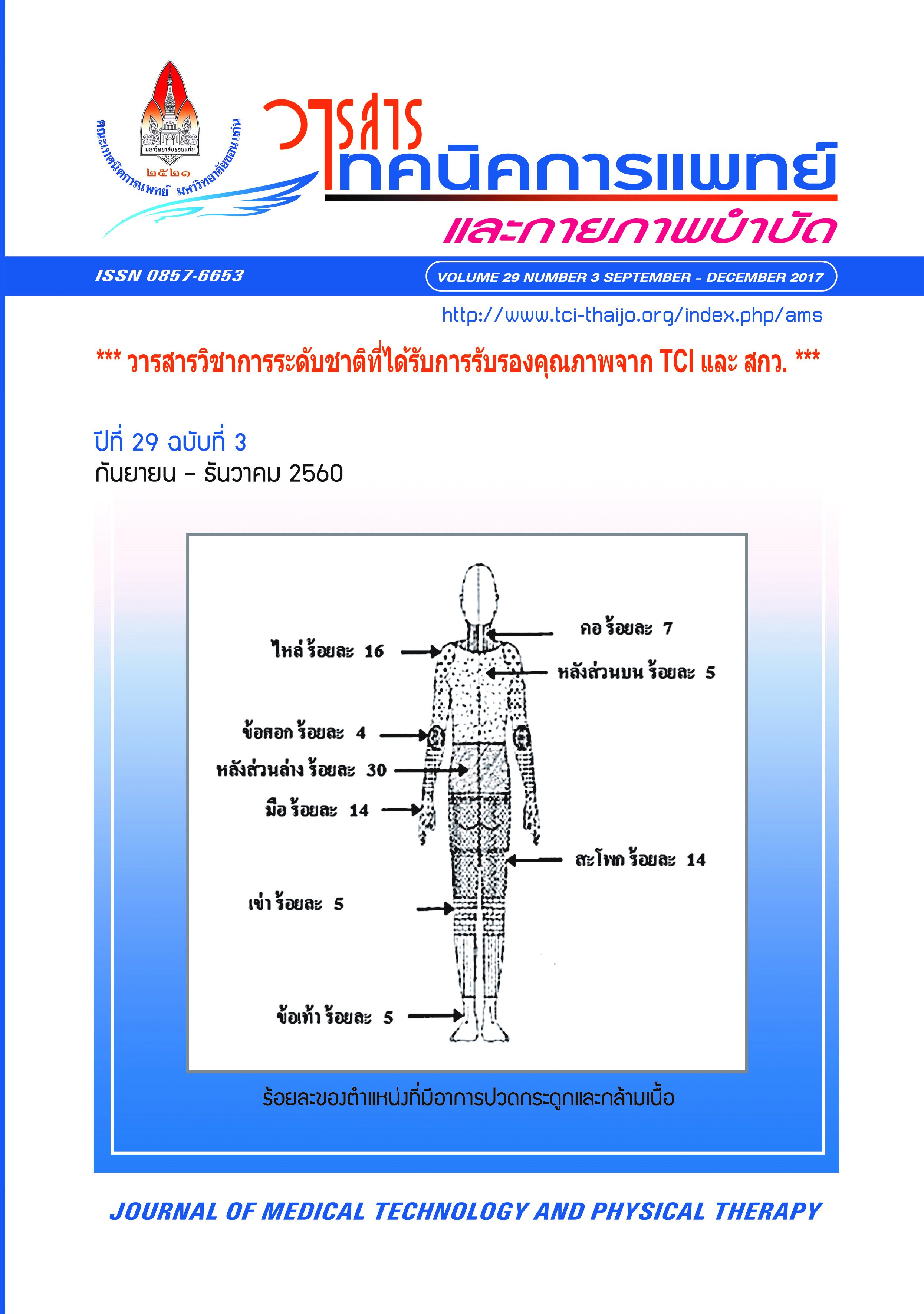Starting positions and range of motion to produce maximal force of lower limb muscles: data from healthy individuals
Main Article Content
Abstract
Muscle strength assessment is commonly used in physical examination and follow-up
the rehabilitation of the patients. Muscle strength assessment using Hand-held dynamometer (HHD) equipment usually has standard starting positions assessment. It is difficult to assess muscle strength in the starting position of those in patients who have impaired balance or abnormal muscle tone.
Moreover, muscle strength assessment in different range of motion (ROM) may affect to muscle force.
Thus, the objective of this study was to investigate the appropriate starting position and compared muscle forces of each eighth muscles of lower extremity in different range of motion (ROM) include outer, middle and inner range in nine healthy female subjects. The different muscles forces in various ROM were analyzed using ANOVA with repeated measurement. The result demonstrated that muscle forces of lower extremity were likely to be highest in outer range followed by middle and inner range except hip adductor muscle. However, the results were shown that there were no significant differences of muscle force between outer and middle range (p > 0.05) in hip flexor, hip abductor, hip adductor, knee extensor and ankle dorsiflexor. The findings might be useful for the positioning and selected staring ROM in muscle strength assessment using by HHD.


